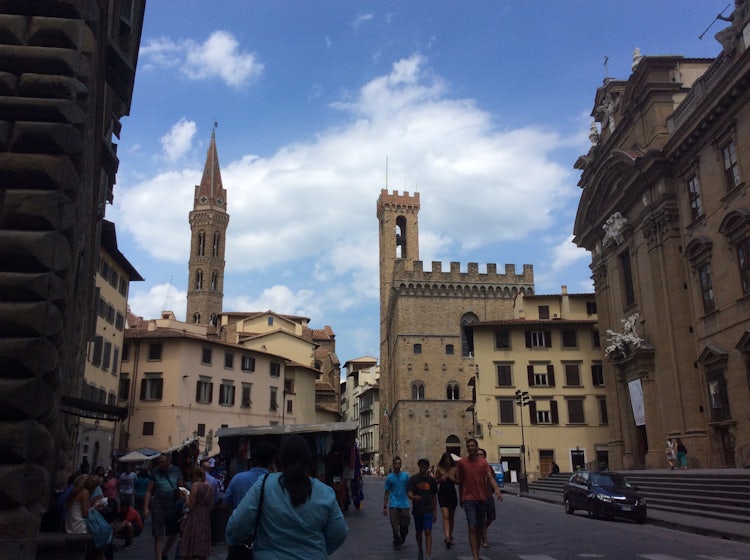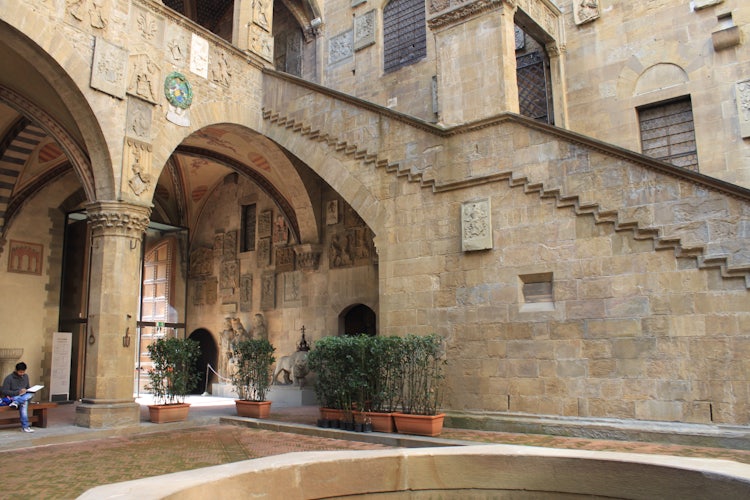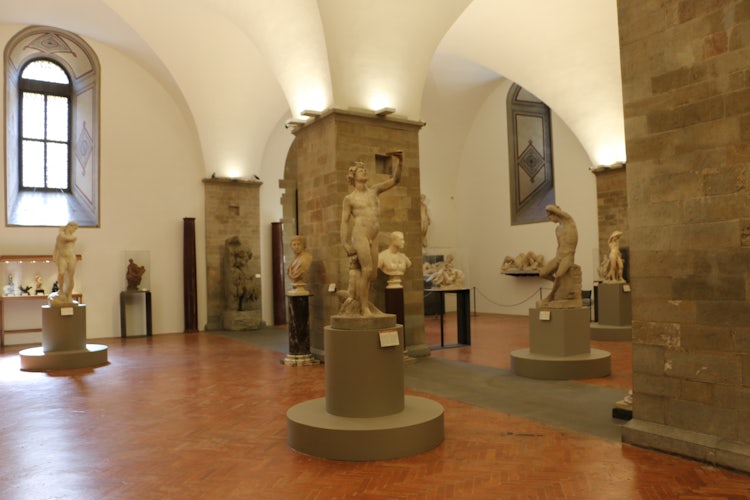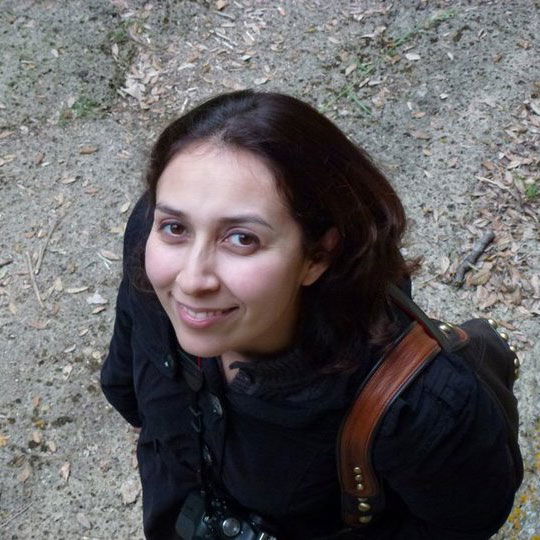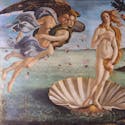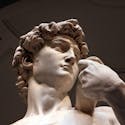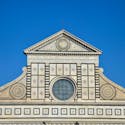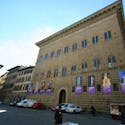A Remarkable Collection of Renaissance sculpture and works of art
The Bargello Museum is located in the impressive Palazzo del Bargello, a fortress with powerful embattlements which surround the austere facade. Begun in 1255, the building was the headquarters of the Capitano del Popolo and later of the Podestà and Council of Justice. In 1574, it became the living quarters for the Captain of Justice (chief of police) and was used as a prison.
Despite a series of alterations and additions which altered the original plan during the 14th and 15th centuries, the palace preserved its pleasant severity, best seen in the beautiful courtyard, the balcony and the large hall on the first floor. A covered staircase, built in the 14th century, leads to an upper loggia. The walls of the courtyard are covered with dozens of coats of arms of the various Podestà and Giudici di Ruota (judges).
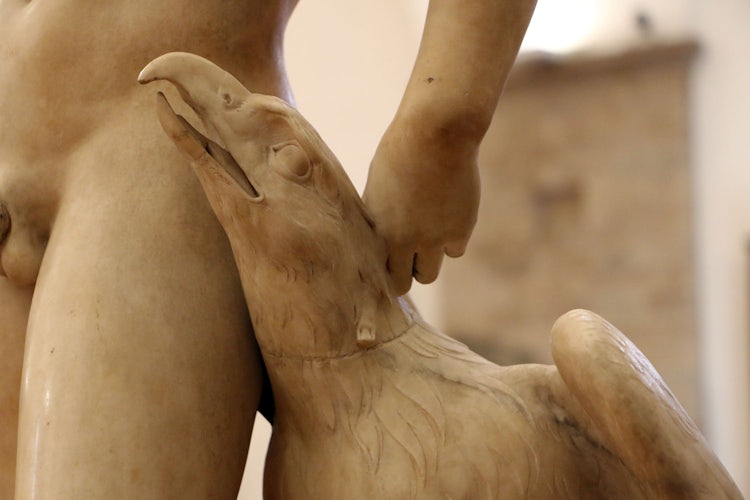
Since 1859, the building houses the Museo Nazionale (the first national museum in a unified Italy) which brings together many important Renaissance sculptures and masterpieces of the minor arts from varying periods, including masterpieces by Donatello, Luca della Robbia, Verrocchio, Michelangelo and Cellini. The museum was subsequently enriched with splendid collections of bronzes, majolica, waxes, enamels, medals, seals, ivories, amber, tapestries, furniture and textiles from the Medici collections and those of private donors. For Renaissance art lovers, the Bargello is to sculpture what the Uffizi is to painting.
The Building itself is Noteworthy
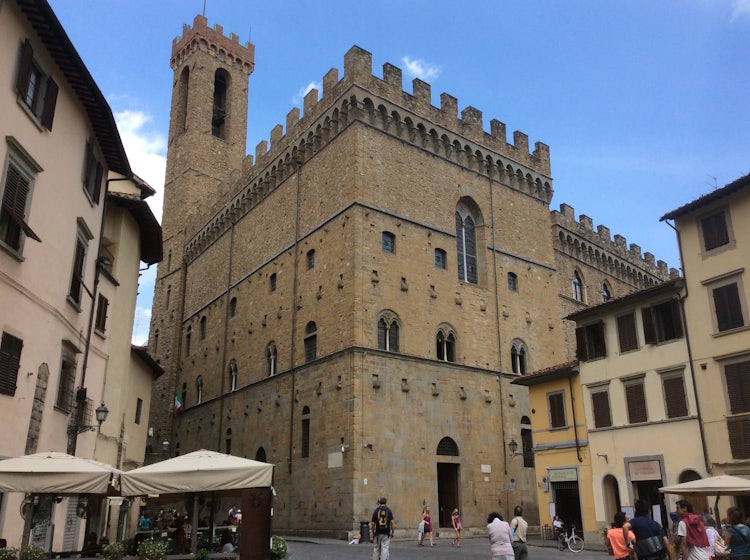
The enormous entrance hall has heraldic decorations on the walls with the coats of arms of the podestà (13th-14th centuries). From here, you enter the open courtyard which is irregular and unique. More coats of arms of the podestà are here, and under the porticoes, are insignia of the quarters and districts of the city. Various 16th century statues by Bandinelli, Ammannati, Giambologna and Danti are set against the walls.

The courtyard leads to a Hall with a collection of 14th century sculpture, including works by Nicola Pisano.
The Hall closest to the staircase houses important 15th century works by Michelangelo, including Bacchus (1470) and Apollo (1530). There are also works by Giambologna, Cellini, Ammannati and Sansovino who made a Bacchus of his own to compete against Michelangelo's. The bronze bust of Cosimo I by Cellini is also in the same room.
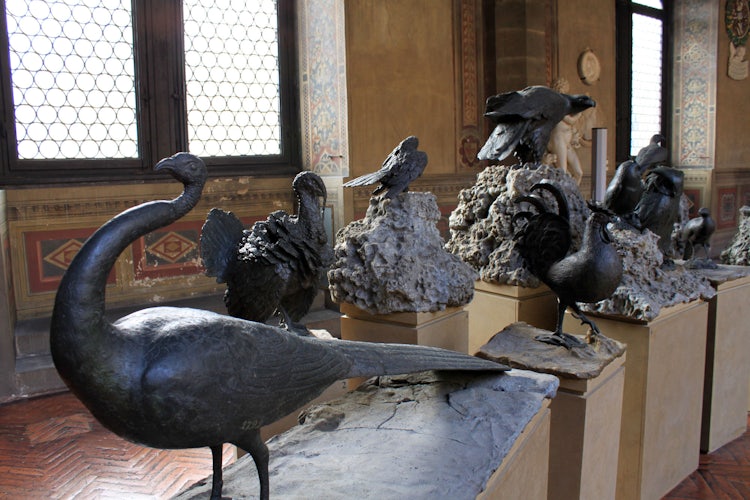

The open staircase leads to the Loggia, ornamentals with various works by other 16th century artists including the delightful bronze animals made for the garden of the Medici Villa of Castello.
The Donatello Room
The first room to the right, once the Salone del Consiglio Generale, is now the Donatello Room and contains many of his works such as St. George (1416) made for the niche in Orsanmichele, the young St. John, the marble David (1408) and the bronze David (1430), the first delicate nude of the Renaissance. To explore the beauty of Donatello's work in Florence, follow our itinerary on Donatello in Florence.
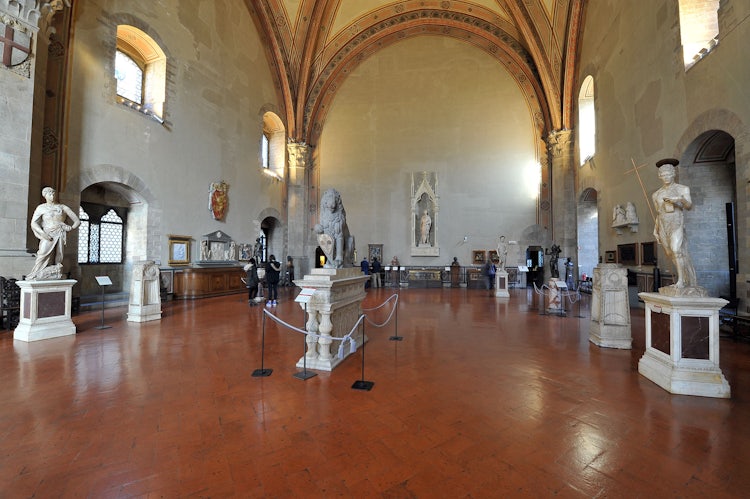
In the same room, easily overlooked, is a particular display which should not be missed. In 1401, Filippo Brunelleschi and Lorenzo Ghiberti competed to earn the most prestigious commission of the day: the decoration of the north doors of the baptistry in Piazza del Duomo. For the competition, both designed a bronze bas-relief panel on the theme of the Sacrifice of Isaac: both panels are on display, side by side. The judges chose Ghiberti for the commission, you can decide for yourself whether or not they were right.
In addition to sculpture...

The museum also houses a collection of goldwork and enamels from the Middle Ages to the 16th century, as well as seals and various metal objects, rare ivory carvings from ancient times up to the 15th century, glazed terracotta sculptures by Giovanni and Andrea della Robbia, busts by Verrocchio, sculpture by Mino da Fiesole and Pollaiolo and military paraphernalia from the Middle Ages to the 17th century. The museum is completed by tapestries in the Sala della Torre and works by artists such as Pisanello, Cellini, Michelozzo and others.
View more of our pics of the Bargello Museum! »
